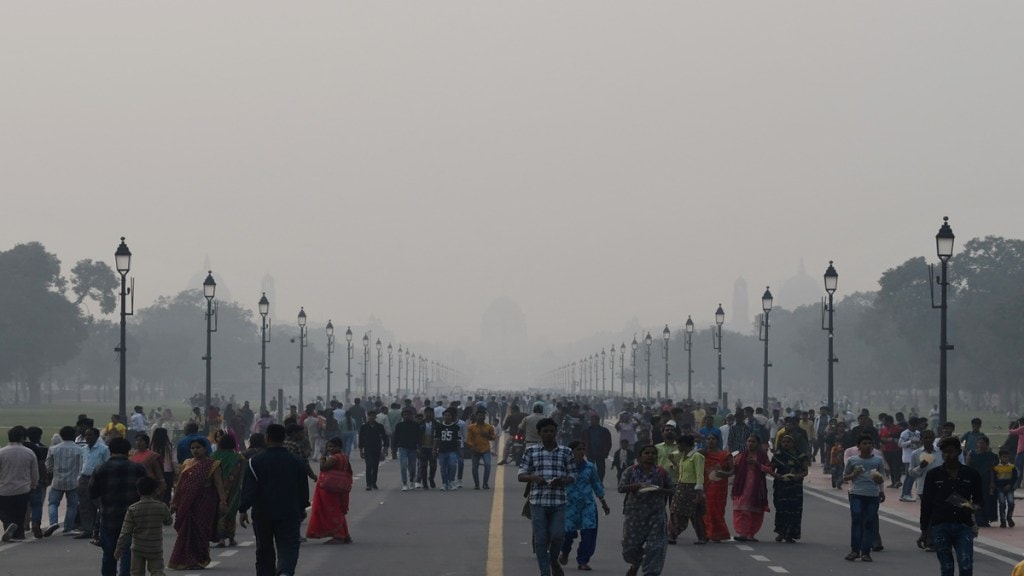The capital’s air quality index stood at 363, categorising it as “very poor” at 8 am, based on data provided by nine out of the 40 monitoring stations, The remaining monitoring stations failed to generate sufficient data for indexing, according to the Central Pollution Control Board’s mobile application Sameer.
Despite rain providing Delhi most polluted city in the world, claims Swiss company as AQI plunges to the ‘very poor’ category again temporary relief, Delhi witnessed a surge in pollution levels on Monday, accompanied by a smoky haze, as people violated the ban on firecrackers during Diwali night.
Also Read:No odd-even rule in Delhi from November 13, Kejriwal govt scraps idea after SC’s rebuke
According to IQAir, a Swiss company specialising in air quality monitoring, Delhi ranked as the most polluted city globally on Monday, followed by Lahore and Karachi in Pakistan. Mumbai and Kolkata secured the fifth and sixth positions among the world’s most polluted cities.
While Delhi experienced its best air quality on Diwali day in eight years on Sunday, with a 24-hour average Air Quality Index (AQI) of 218 at 4 pm, the post-Diwali burst of firecrackers led to a pollution spike. The AQI increased from 275 at 7 am on Monday to 358 by 4 pm.
Also Read:Pollution live: Delhi’s air quality improves from disastrous 900+ score
According to a statutory body responsible for formulation of strategies to reduce pollution in Delhi-NCR told PTI, “It’s evident that the spike in pollution levels post Diwali is due to two factors — firecracker bursting and farm fires — with fireworks being the predominant reason in this case”
The concentration of PM2.5, fine particulate matter harmful to the respiratory system, exceeded the safe limit in many areas, reaching over 1,000 micrograms per cubic meter in some locations due to firecracker bursting.
Cities across India, as per Central Pollution Control Board (CPCB) data, witnessed a rapid rise in air pollution levels after Diwali. The AQI surge was notable in various regions, such as Baghpat in Uttar Pradesh, Kaithal in Haryana, Bathinda in Punjab, Bharatpur in Rajasthan, and Bhubaneswar and Cuttack in Odisha.
Also Read:Delhi’s air quality remains in ‘severe’ category ahead of Diwali
Delhi Pollution Control Committee (DPCC) data revealed alarming PM2.5 levels at specific locations, with concentrations surpassing 1,000 micrograms per cubic meter. The fine particulate matter concentrations increased by 45% and 33% for PM2.5 and PM10, respectively, compared to the previous year.
Despite stringent measures, including a ban on construction work and the entry of polluting trucks under the Graded Response Action Plan (GRAP), the air quality in Delhi remains a concern.
The Commission for Air Quality Management (CAQM) officials mentioned the ongoing rise in stubble-burning incidents and unfavourable meteorological conditions, indicating a need for continued monitoring and potential further action.
“Stubble burning incidents are rising again and the meteorological conditions are not favourable (for dispersion of pollutants). We will review the situation and act accordingly,” the official added
(With PTI inputs)
